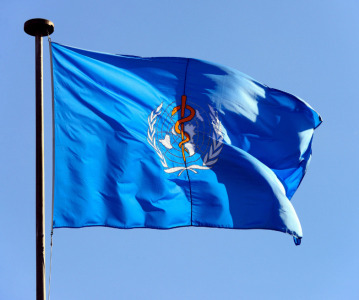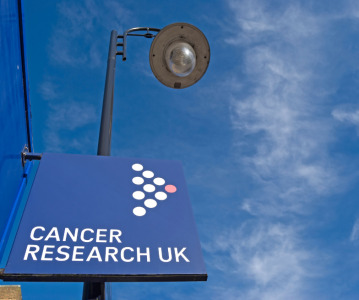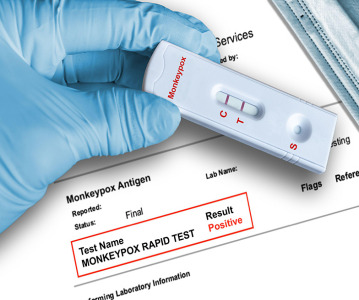Amgen Presents Open-Label Extension Data from Ongoing Phase II Study of AMG 334 In the Prevention of Episodic Migraine

Amgen has announced positive interim results from its open-label extension of the global Phase II, double-blind, placebo-controlled study evaluating the safety and efficacy of AMG 334 for the prevention of episodic migraine. Patients who entered the open-label phase received AMG 334 70 mg monthly and experienced a sustained reduction in monthly migraine days at week 52. The data were presented at the 57th Annual Scientific Meeting of the American Headache Society (AHS) on 19 June 2015, in Washington, D.C.
At one year, patients receiving AMG 334 70 mg experienced an average of a -4.9-day reduction from a baseline of 8.7 mean monthly migraine days, regardless of treatment received during the blinded phase. The 50% responder rate (greater than 50% reduction in monthly migraine days) was 62%at 52 weeks. Additional responder rates were reported for the first time: at 52 weeks the 75% responder rate was 38% and the 100% responder rate was 19%
.
"These long-term data further demonstrate that AMG 334 provided meaningful benefit to these patients with fewer migraine days and more days with the ability to participate in work and social activities each month," said Sean E. Harper, executive vice president of R&D at Amgen. "The sustained safety and efficacy shown in this interim analysis adds to the growing body of evidence that reinforces the potential of AMG 334 for patients with this debilitating condition. We look forward to advancing the program to help fill an unmet need in migraine prevention."
The open-label portion of the Phase II study included 383 patients. All patients received AMG 334 70 mg starting at week 12 for up to 256 weeks. Safety and tolerability were evaluated monthly and this interim analysis includes data up to week 52. Additional efficacy endpoints included the change in monthly migraine-specific medication use days and patient-reported outcomes using the Migraine Disability Assessment (MIDAS) questionnaire.
Patients reported a nearly 50% reduction of monthly migraine-specific medication use days of -2 at 52 weeks, from a baseline of 4.3 days per month. In addition to clinical measures, patients self-reported the impact of headache and migraine on their daily activities. At one year, using the MIDAS tool, patients reported an improvement of approximately 12 days over the previous 3 months in their ability to function in work, home and social situations. According to the Migraine Research Foundation, migraine costs American employers more than $13 billion each year as a result of 113 million lost work days.
The safety and tolerability profile during the open-label phase was similar to that observed in the blinded phase of the study. The most commonly reported adverse events included fatigue, influenza, nasopharyngitis, arthralgia and back pain. No Grade 4 or 5 adverse events were reported. Serious adverse events were reported in 13 patients, one of which was deemed treatment-related. Less than 5% of patients discontinued the study during the open-label phase due to adverse events.
Related News
-
News CPHI Frankfurt 2022: Innovator Interview – DSM Biomedical
At CPHI Frankfurt we spoke to Anne-Cecile Bayne, Global Science & Innovation Lead Pharma and Medical Nutrition, and Marc Hendriks, Vice President Strategy & Business Development, on their expertise in nitrosamines and business strategy at DSM Biomedica... -
News New WHO health emergency guidelines expect full transparency from Big Pharma
The WHO are proposing a new set of pandemic guidelines to set out how future global health crises should be handled. -
News Magic mushrooms could be used to treat mental health conditions
A compound found in magic mushrooms, psilocybin, could be used to treat mental health conditions and help patients suffering with severe depression, as shown by the results of the largest study of its kind to date. -
News UK-based partnership to launch DETERMINE study into rare cancer research
UK-based CRO Quanticate is set to partner with Cancer Research UK for the launch of the DETERMINE study focused on testing a range of existing and approved drugs and therapies on rare cancers. -
News FDA approves Thermo Fisher blood tests for wheat and sesame allergies
Both tests have been approved by the US regulator for in vitro diagnostic use -
News QIAGEN launches world’s first syndromic test for monkeypox
The test can distinguish between monkeypox and other diseases that cause similar symptoms. -
News Monkeypox Update: Vaccine shortage, sewage surveillance and global testing
As concern over the monkeypox outbreak continues to rise, we take a look at major developments from the first week of August. -
News CPHI Podcast Series: The importance of novel excipients for innovative drug development
The latest episode in the CPHI Podcast Series dives into the world of novel excipients and explores their importance for innovative drug development.
Position your company at the heart of the global Pharma industry with a CPHI Online membership
-
Your products and solutions visible to thousands of visitors within the largest Pharma marketplace
-
Generate high-quality, engaged leads for your business, all year round
-
Promote your business as the industry’s thought-leader by hosting your reports, brochures and videos within your profile
-
Your company’s profile boosted at all participating CPHI events
-
An easy-to-use platform with a detailed dashboard showing your leads and performance


.png)




